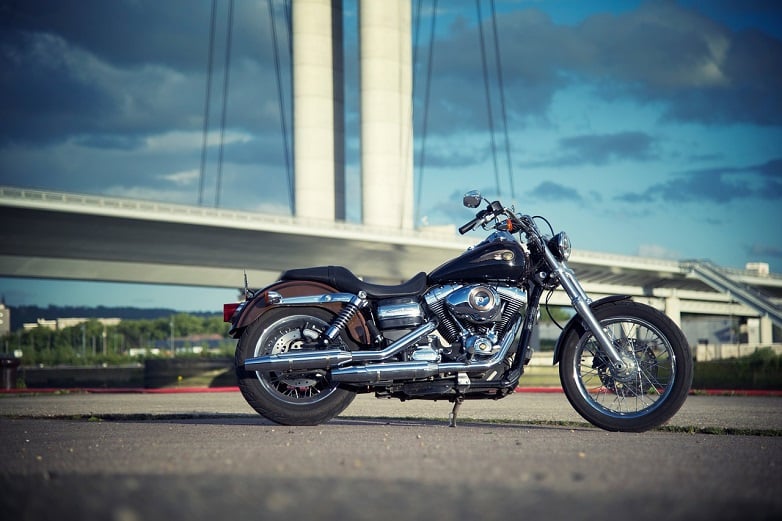
If you’re an Illinois motorcyclist, you know there is no shortage of great rides throughout the state. With that said, there are still plenty of dangers you need to contend with if you’re a biker. While motorcycle registrations made up only 3% of vehicle registrations throughout the state, they also accounted for more than 11% of all traffic fatalities in a single year. This serves as a sobering reminder that people who enjoy motorcycles should adhere to the following motorcycle safety tips in order to avoid serious accidents. The Chicago motorcycle crash lawyers at Lerner and Rowe offer the following tips to keep you and the bikers in your family safe.
New Motorcycle Rider Safety Tips
Before getting on that bike, make sure you feel comfortable handling it. If you’re a new rider or have recently purchased a new bike, practice with it before taking it on the road. Riding a motorcycle and driving a car each require a unique set of skills.
Prior to purchasing a bike, make sure that you can handle the models you’re looking at. This begins before you ever start up the engine.
- Your feet should touch firmly on the ground, rather than being on your tiptoes.
- The controls and handlebars should be easily accessible and within quick reach.
- Test the bike by making sure you can get it on and off of the center stand.
- Invest in leather outerwear. It’s for more than fashion, leather protects your skin from road rash and other issues that happen if you crash. Gloves, jackets, and chaps are some of the best investments a rider can make.
A few other things to think about:
- Don’t forget your feet! If you want your toes to remain intact post-accident, proper footwear is a must. Closed toe boots, or at least over-the-ankle footwear, will protect your precious digits.
- Take safety courses to make your ride as safe as possible. They can help you understand what risks you may encounter on day to day commutes or long distance adventures. A professional class can provide you with the knowledge and skills you may not learn when your friend teaches you how to ride.
- Familiarize yourself with your owner’s manual. It could save you some time later on down the road.
- Ensure you know how to handle your motorcycle in all conditions; rain, snow, wind, and fog. Slippery roads mean difficult handling and possible accidents. Some motorists have cars for bad weather conditions. You can always enlist a ride-sharing service if you don’t feel comfortable staying on the road.
Other Illinois Motorcycle Safety Tips
Pre-ride– You need to check your bike. Walk around your motorcycle to visually inspect all the parts. Lights, horns, and turn indicators should be in perfect working condition. Studies indicate that these safety features can help prevent accidents. Check the chain, belt, brakes, and shaft. Monitor the wear and tear and pressure on your tires.
Your bike should have anti-lock brakes. If they don’t, invest in having them installed. These brakes help the driver retain steering control in the event of an emergency stop.
Safety gear- Wearing a full-face helmet and the right gear can also play a critical role in whether a motorcyclist survives a crash. Statistics show that riders who do not wear helmets are 40 percent more at risk of a fatal brain injury in a crash. Clothes made specifically for riding–jackets, boots, gloves, and pants–can help protect from burns and road rash.
Weather and Road Conditions
Not many motorcyclists enjoy riding in bad weather. However, there are times when you may find yourself caught in a storm. The safest thing to do is to pull off the road and find shelter until the bad weather passes.
If that isn’t possible, then remember that wet roads affect how well the bike’s tires will grip the road. Creating even more danger is all the oil residue the rain pushes to the surface of the road.
When you’re riding, it’s best to avoid roads that aren’t smooth. Dirt and gravel roads, or construction zone areas, can cause a driver to lose control of their bike. And watch out for potholes or other debris which may be on the road.
Assume that drivers don’t see you. Most multi-vehicle motorcycle crashes happen when other drivers don’t see the motorcyclist. Be overly cautious at intersections, one of the most dangerous spots on the road.
Ride sober. Call a cab, use a ride-sharing service, or get a ride from a friend. Drinking can impair your reaction time and as a motorcyclist, you need to stay aware of your surroundings and be able to stop quickly enough.
Lerner and Rowe Injury Attorneys do not encourage drinking and driving. Stay safe and stay alive.
Injured in a Motorcycle Accident?
Other drivers are typically at fault for the majority of motorcycle accidents. Common causes include drivers:
- Trying to ‘beat’ a red light;
- Making left-hand turns without yielding to traffic coming in the other direction;
- Failing to see motorcycles due to blind spots;
- Ignoring a motorcyclist stopped at a light or stop sign and rear-ending the bike;
- Being distracted by other passengers or texting; or
- Driving under the influence of alcohol and/or drugs.
| Related topic: Do’s and Don’ts When Traveling Behind Motorcycles
Common Bone Breaks That Occur in Crashes
Cars and motorcycles weigh anywhere from 250 pounds for a cruising bike to 500 pounds for a Harley Davidson. Keep in mind that the average car weighs around 2,900 pounds. With this amount of weight involved, bone breaks are very common.
An arm will often break in both of the two bones–the radius and ulna. It causes pain, swelling, inability to rotate your arm, and numbness or weakness in your wrist or fingers.
A leg contains four bones, including your knee. If one or more of these break, expect pain, swelling, and deformity near the fracture.
Rib fractures are worrisome, specifically because a split rib could puncture your lungs, spleen, or veins.
A broken skull can tear the layers of protective tissues that surround your brain. Bacteria can enter the brain and result in a spreadable infection.
Types of Burns Suffered by Bikers
Burns occur often during motorcycle accidents. They can come from things like friction, chemicals, or fires. There are multiple types of burns that you can experience, and each of them increases in intensity and levels of care.
First degree is the most superficial of all of them, usually no worse than you’d get from a brief brush with a stove. Usually, the outer layer of the skin blisters. Second degree burns are the most common from car accidents. You may or may not feel this burn, as it could damage the nerves below the surface of your skin.
This could occur if your bare skin comes into contact with the muffler or other hot parts of the motorcycle. The final and most dangerous burn is third degree, which can burn deep enough to damage the bone. You should always consult a medical professional immediately after an accident.
There are long and short term elements to a successful treatment process for burns sustained during a crash. You may need treatment for both physical and mental trauma. If the price of your treatment is overwhelming you, contact a Chicago injury attorney from Lerner and Rowe today. You could receive financial compensation to assist you in paying for the cost of treatment.
Contact a Motorcycle Attorney Today!
You can trust Lerner and Rowe Injury Attorneys with your motorcycle injury case. Our firm provides more than just motorcycle safety tips. We will help you with skill, experience, and enthusiasm. Contact us today via phone at (844) 977-1900 or by taking advantage of our LiveChat feature.



